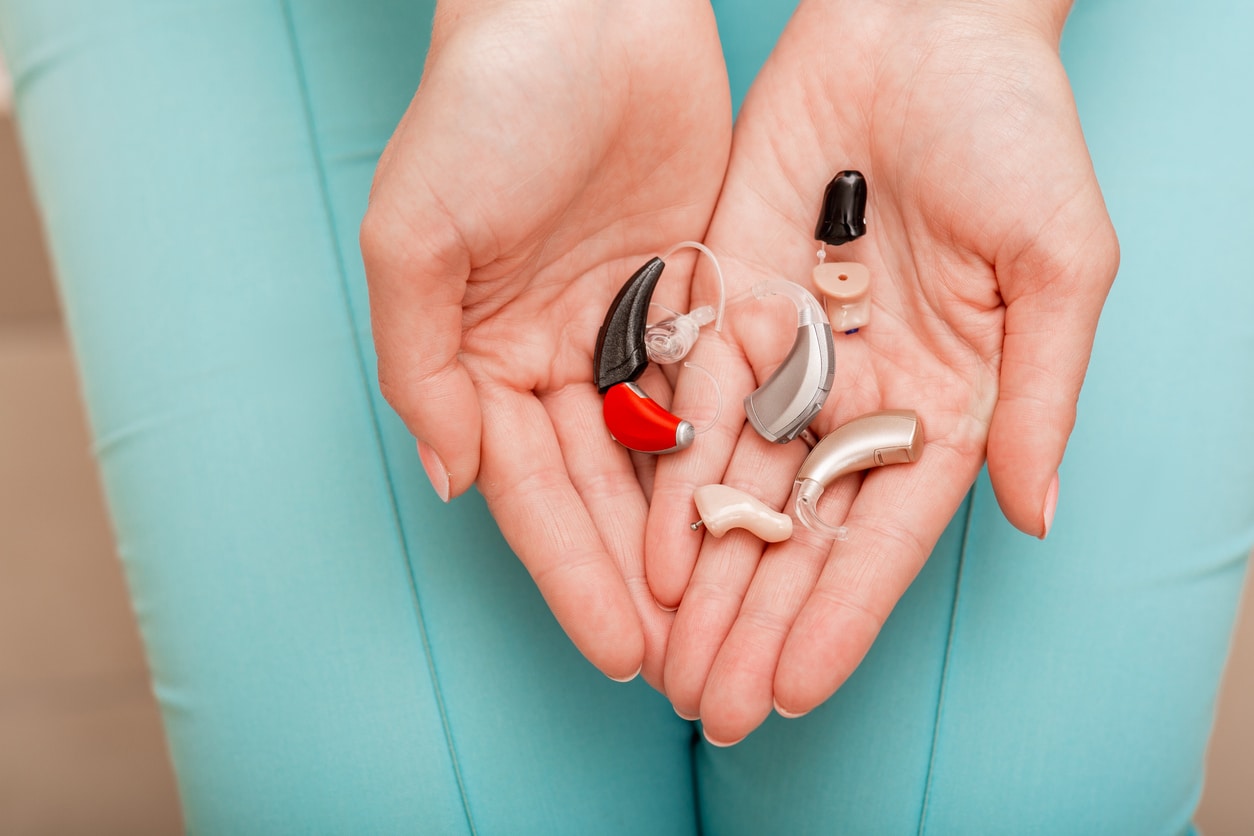Approximately 28.8 million U.S. adults could benefit from hearing aids. These tiny devices amplify speech and other important sounds to provide you with clear communication and better background awareness. Getting your first pair of hearing aids is an exciting experience, but it can also feel a little overwhelming to find the right device.
Let’s take a look at a few different hearing aids and the factors that go into finding the right pair.
The Different Types of Hearing Aids

There are a few different types of hearing aids:
- Completely-in-the-canal (CIC). CIC devices are the smallest type available. They sit deep in the ear canal with a thin pull cord for insertion and removal.
- In-the-canal (ITC). ITC devices sit partly inside the ear canal.
- In-the-ear (ITE). ITE devices fill either most of the bowl-shaped portion of the outer ear (full shell) or only the lower half of the outer ear (half shell).
- Behind-the-ear (BTE). BTE devices rest comfortably behind the ear. An earpiece, connected by a small tube or cord, directs sound into the ear canal.
- Receiver-in-the-canal (RIC). RIC devices are similar in appearance to BTE devices, but the receiver (or speaker) goes inside the ear canal itself rather than in the primary device.
What Factors Go Into Picking the Right Device?
Four main factors go into choosing a hearing aid:
- Degree of hearing loss. Patients with more profound hearing loss require larger styles with greater amplification, while those with mild loss can usually receive enough benefit from smaller options.
- Appearance preferences. Depending on your degree of hearing loss, you can choose between barely-there CIC devices and larger but still sleek BTE options.
- Feature preferences. Different styles and brands offer different features. For example, if you have tinnitus, you may want devices that offer tinnitus masking. If you spend a lot of time swimming at the Carroll Butts Aquatics Center, your specialist may recommend water-resistant options.
- Dexterity. Patients with dexterity issues, like those with arthritis, may prefer larger styles that are easier to handle.
While it sounds like a lot to consider, your hearing aid specialist will walk you through these factors and show you a few style options to help you find the perfect device. Contact Advantage ENT & Audiology to schedule your appointment today.